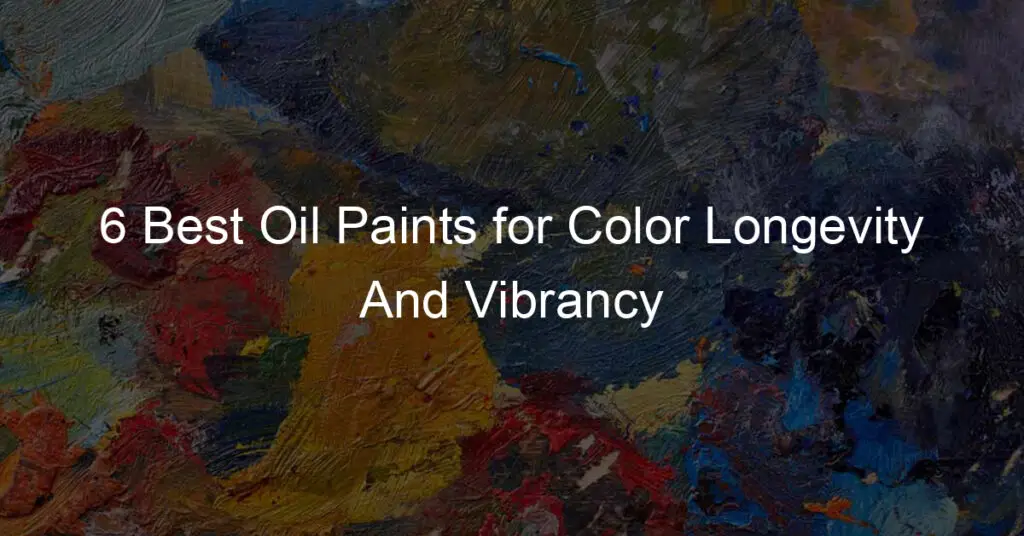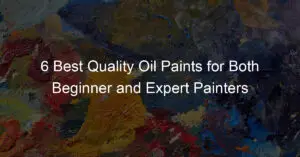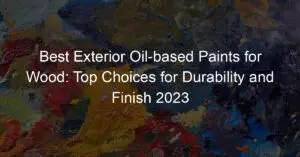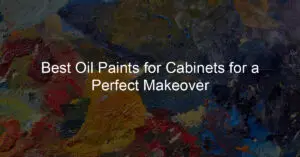There is more discreet fun in artwork, from the vibrancy of the pigments to their consistency. Whether you are a professional artist, a beginner, or aspiring to be an artist, you will always need the best oil paints for your art love.
The artwork has expanded exponentially over the past few decades, and the techniques and styles have also improved.
Oil paints are readily available in a variety of range colors. You will not need to be highly skilled to make them your ideal paints.
Best oil paints come with benefits that make them truly special. First, these oil paints take longer to dry out, meaning you will have room to correct the previous mistakes made while painting.
Secondly, they have an exceptional and catchy vibrancy; the colors are durable thus, will not fade with time.
Read on to discover the best oil paints for your artwork.
Quick Glance: Best Oil Paints
| Oil Paints | Best Features | Color Pack | Item Volume |
| Bob Ross Oil Paint | Landscape painting | 14 | 200ml |
| Winsor & Newton Oil Paint | Water mixable | 20 | 12ml |
| Williamsburg Native Italian Earth Paint Set | Unique property | 10 | 37ml |
| Van Gogh Color Paint | Tinting strength | 1 | 20ml |
| Glow Cubed Oil Paint | Self-luminous paint | 10 | 220ml |
| R&F Handmade Oil Pigment Paints | Premium quality | 12 | 38ml |
6 Best Oil Paints for Both Professionals and Beginners
1. Best for Landscape Painting: Bob Ross Oil Paint
Get the best landscape oil paint from Bob Ross for a perfect wet-on-wet painting mechanism.
This set comes with one (200ml) tube of each; Yellow Ochre, Van Dyke Brown, Titanium White, Sap Green, Prussian Blue, Phthalo Green, Phthalo Blue, Mountain Mixture, Midnight Black, Indian Yellow, Dark Sienna, Cadmium Yellow, Bright Red, and Alizarin Crimson.
The featured pigment is enriched with colors that yield a never-ending amount of natural combinations of colors.
This landscape painting is specifically designed for a stiff and smooth consistency.
2. Best Water Mixable: Winsor & Newton Oil Paint
The Winsor & Newton oil paint is formulated to look and work as a conventional oil paint color.
You might be wondering what differentiates conventional and artisan oils; their ability to clean and thin up with water is the key differentiation factor.
The hazardous solvents aren’t essential for artisans; however, artists can enjoy painting in a safer environment, making it perfect for artists sharing a workspace, painting at home, or even in schools.
This Artisan paint is formulated with no water; its safflower and linseed oils are designed to allow color paints to accept water creating a firm emulsion and keeping the functional features of conventional oils.
Each pigment requires different oil levels in the formulation, meaning the sheen may slightly differ from color to color.
Artisan oil has low buttery consistency anticipated from the Winsor & Newton paint. This consistency is a dynamic balance between the oils used during the formulation and the pigments.
3. Best Unique Property: Williamsburg Native Italian Earth Paint Set
Bring the best of your artwork with the Williamsburg oil paint. Each color or pigment in this set is given a different treatment to create a perfect and unique artwork property.
The set included Native Italian Earth colors; Roman earth, Pompeii red, Pozzuoli earth, black, Rosso Veneto, Terra Rosa, green ochre, terra vertex, Italian yellow ochre, lemon ochre, and orange ochre to bring an exceptional lightfastness.
Moreover, it features concentrated oils that are handcrafted in tiny batches.
4. Best Tinting Strength: Van Gogh Color Paint
These Dutch-designed van Gogh color paints have a buttery consistency with superb tinting strength.
Its featured colors have raised pigmentation levels for intense colors, consistent thickness, and uniform gloss levels. Furthermore, the oil color has a superb lightfastness rating.
The oil paint is easy to use and mix. This oil set is ideal for students, beginners, and working artists.
You will love the grade quality of the oil paints with student brand prices. Its special wood box comes with 32(20ml) tubes of various colors and 2(60ml) tubes.
5. Best Self-Luminous Paint: Glow Cubed Oil Paint
Spend less time painting and have endless enjoyment of a vivid glow painting with the Glow Cubed self-luminous oil paint.
You can create an intense glow of gradients, modern painting, abstract, still life, and landscape with this oil painting. No more worrying about lights going dim since your painting will glow.
The graphic designs, contemporary arts, modern and even traditional fine arts can create a catchy beauty; lightning strikes, a candle glows, water reflections, automobile headlights, street lights, street signs, glowing flog, night scenes, sunrise, sunsets, cityscapes, landscapes, silhouettes that will leave you imagining of the secret behind the artwork.
These quality oil paints are handcrafted in the United States by polished linseed oil, artist oil painter, and raised pigment volume concentration that creates a vivid glow. It’s ready to use; thus, no mixing or mess.
Each color has a brighter glow pigmentation that can glow at a rate of 6 to 12 hours on a single charge leaving others mesmerized by your painting skills.
Charging it is easy; you can use blacklight, indoor lighting, sunlight, halogen, or fluorescent to charge.
The box features 10 (22ml) glow colors; Purple Blue, Blue, Blue Mermaid, Green, Lightning Bug, Yellow Green, Orange Yellow, Pink Orange, Orange, and Red Rocket.
6. Best Premium Quality: R&F Handmade Oil Pigment Paints
The R&F pigment oil sticks are solvent-free and feature linseed oil paint in the form of a stick. Its stick makes it easy to dispense using brushes, palettes, and knives, making the painting encounter extra immediate and portable compared to regular oil painting equipment.
It’s milled in tiny batches in Kingston, New York, with natural plant wax, natural beeswax, pigment, and linseed oil. The outcome is oil paint with lipstick tender consistency.
The package includes a cradled ampersand geoboard and 12 (38ml) pigment sticks; Turkey Umber Greenish, Cadmium Green Pale, Veronese Green, Cobalt Blue, Turquoise Blue, Indigo, Quinacridone Magenta, Cadmium Red Medium, Dianthus Pink, Indian, Cadmium Yellow Light, Extra Pale, and Brilliant Yellow.
| Brand | Color | Price (USD) | Lightfastness Rating | Overall Rating |
|---|---|---|---|---|
| Winsor & Newton | Ultramarine Blue | 15.99 | AA | 9.5/10 |
| Old Holland | Cobalt Violet | 38.99 | AA | 9/10 |
| Sennelier | Yellow Ochre | 19.99 | AA | 8.5/10 |
| Rembrandt | Burnt Umber | 12.99 | A | 8/10 |
| Daniel Smith | Cadmium Red Deep | 29.99 | AA | 8/10 |
Can the specific style or technique used by an artist affect the color vibrancy and longevity of their oil paintings?
When it comes to oil painting, the artist’s technique and style are critical factors in determining the longevity and vibrancy of their artwork. As paint layers are built up and colors mixed, the artist’s skill in handling the medium will determine how well the colors blend together and how vivid the final result is.
Good quality paint mixed with a mastery of brushstrokes can create works that remain vibrant for many years to come. The artist’s approach to blending colors also plays a key role in preserving color vibrancy. Careful mixing of complimentary colors and judicious use of highlights and shadows can create depth as well as richness in color.
Applying transparent glazes over an established layer of opaque colors can provide additional vibrancy, while certain pigments are known for having greater longevity than others when exposed to light or air. All these techniques require time and practice for an artist to master, but when put into practice they can help ensure that an oil painting retains its luminous beauty for years to come.
How do different types of brushes or tools used in oil painting affect color vibrancy and longevity?
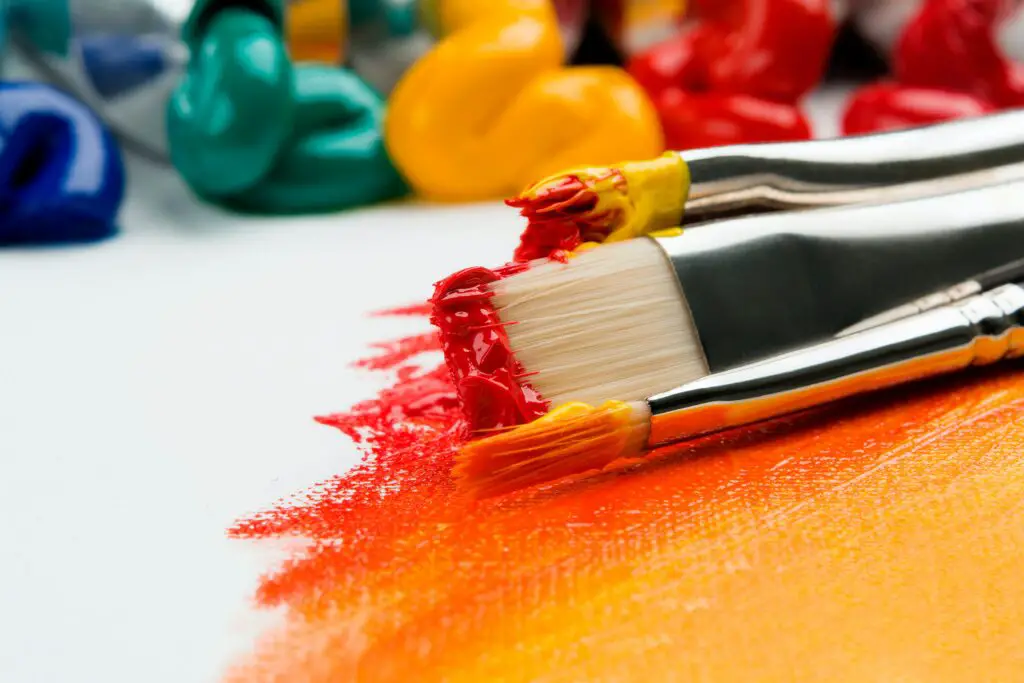
The type of brushes or tools used in oil painting can have a significant impact on the vibrancy and longevity of color. Different shapes, sizes, and textures of brush bristles help create unique visual effects that contribute to the overall look and feel of a painting.
Brushes with shorter, stiffer bristles are better suited for creating thicker layers of paint while those with longer softer bristles can help blend colors together more smoothly. In addition to affecting texture and appearance, different types of brushes also affect how long an oil painting will stay vibrant over time.
Soft brushes tend to deposit less paint onto the canvas which helps reduce discoloration due to fading from light exposure or oxidation from air contact.
Choosing quality materials is also important; natural bristle brushes typically last longer than synthetic ones because they retain their shape better when exposed to solvents like turpentine or mineral spirits which are commonly used in oil paintings.
Can the thickness or texture of an oil paint layer affect its color vibrancy and longevity?
The thickness and texture of an oil paint layer can have a major impact on the vibrancy and longevity of color. Thick layers with a more textured finish will offer greater protection from fading or discoloration over time, as they will reflect more UV light and create an airtight seal that prevents oxidation.
Thin layers, on the other hand, may need to be touched up more frequently as the colors can fade quickly when exposed to sunlight or air. Artists can also use various painting techniques to create different textures in their oil paintings.
Layering different thicknesses of paint or utilizing dry brush techniques can add interesting patterns and shapes that help bring out the vibrancy of colors. Furthermore, certain textured mediums like gels or glazes can also be used to create unique finishes that hold up well against fading or discoloration over time.
Can oil paint colors fade or change over time, even if high-quality paints and materials are used?
Yes, even with the use of high-quality paints and materials, oil paint colors can fade or change over time. This is due to a variety of factors such as exposure to air, light, heat, and moisture.
UV radiation from sunlight will cause pigments to degrade more quickly, resulting in fading and discoloration. Heat can cause colors to become more intense or bolder than intended which could make them appear distorted.
Moisture can also lead to mold growth on the surface of the painting, causing stains that alter the appearance of colors. It is important for artists to use proper techniques when creating an oil painting in order to preserve its vibrancy and longevity.
A combination of quality paints and a mastery of brush strokes are key elements that help reduce fading or discoloration. Protective layers such as varnish or glazes should be considered when applying oil paint directly to the canvas as these provide additional coverage against UV damage or oxidation.

Are there certain formulas that will last longer than others?
Yes, there are certain formulas that will last longer than others when it comes to oil painting. To ensure colors are vibrant and maintain their longevity, artists should use a combination of high-quality materials and proper techniques when creating their works.
Pigments known for their lightfastness, such as cobalt blue and alizarin crimson, should be chosen over more fugitive colors such as cadmium yellow. In addition, transparent glazes can be applied over opaque colors to create additional vibrancy while helping protect against UV damage and oxidation.
The way in which an artist applies the paint is also important when it comes to preserving color vibrancy and longevity. Choosing the right brush or tool for the job can make all the difference; softer brushes with longer bristles are better suited for blending colors together smoothly while harder brushes with stiffer bristles help create thicker layers of paint.
As well, layering different thicknesses of paint or adding textures through tools such as palette knives can help bring out the vibrancy in colors even more so.
Are cheaper oil paints just as good as more expensive ones?
When it comes to oil painting, the quality of your materials matters–and this is especially true for paints. Cheaper paints tend to have lower pigment concentrations and contain inferior ingredients that can lead to a variety of problems, such as fading or discoloration over time.
They also tend to be more difficult to mix and become stiffer when dry; this makes them harder to manipulate accurately on canvas. In contrast, more expensive paints are usually made with superior pigments, which means they will remain brighter and more vivid for longer.
Expensive paints also tend to be smoother and easier to spread on canvas, allowing the artist greater control over their techniques. Additionally, they hold their shape better when exposed to solvents like turpentine or mineral spirits which are often used in oil paintings.
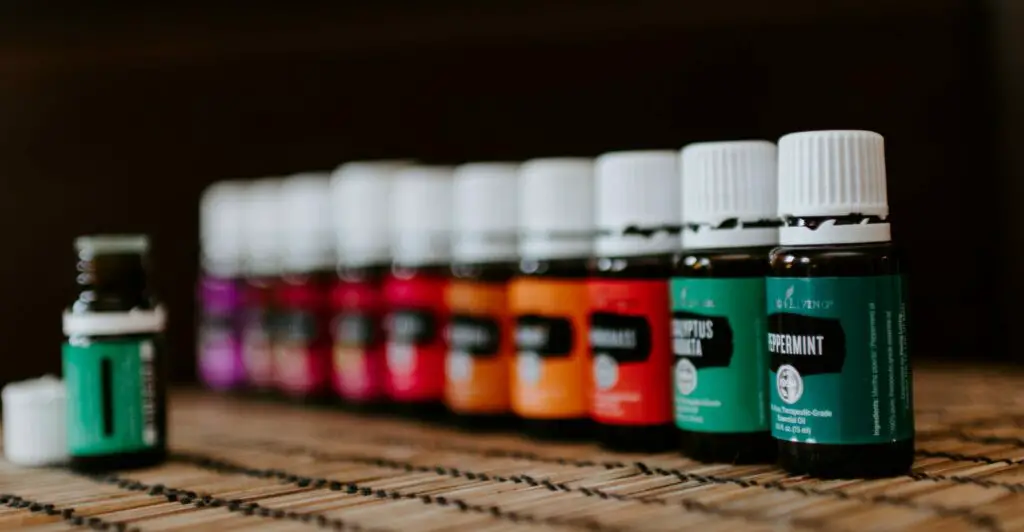
Final Thoughts
Take your artwork to the next level; surprise others with your painting skills with the best oil paints.
Get high-quality oil paint with great pigments for color longevity and vibrancy. Besides, it is critical to consider what goes best for your paint when getting oil paints.

